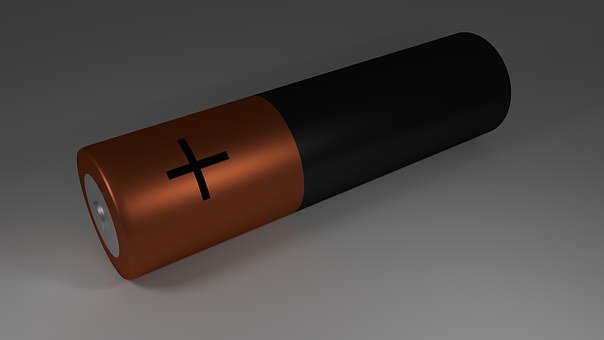Key Points:
- Only the voltage isn’t enough to calculate the runtime. Ampere and watts play a significant role as well.
- Batteries must be stored appropriately to maintain longevity.
- Lithium batteries should be stored with full or partial charge for maximum longevity and performance.
Compared to other batteries, lithium batteries offer a substantially higher energy density. As battery-powered equipment grow increasingly widespread, questions and queries concerning the batteries always arise. Questions such as our topic for this article, how long does a 40v lithium battery last per charge?
It actually depends on the type of equipment you are using the battery with. There are other factors such as wattage and amperage ratings that you have to take into consideration before you can calculate how long a battery will last per charge. Basically, the formula is Hours(h) = Ampere (Ah) x Voltage(v)/Watts(w).
Other significant questions involving lithium batteries, such as their advantages and disadvantages, lifetime, and so on, may emerge. Throughout this essay, I’ll try to cover some of the most prevalent questions and give comprehensive and detailed answers.
What is the Service Time of a 40V Lithium Battery per Charge?
The answer directly depends on the amperage rating of the battery as well as the equipment’s watt consumption rating alongside the voltage rating of the lithium battery. So, how long does a 40v lithium battery last per charge?
For example, if you are using an equipment of 100 watts and your battery has an ampere rating 4.0 Ah.
So, applying the formula we get, the battery should last: (4 x 40) / 100 = 1.6 hours.
But if you are using an equipment with 80 watts, the battery should last: (4 x 40) / 80 = 2 hours.
So, as you can see, how long the battery will last entirely depends on the equipment and the ampere rating apart from the voltage rating.
Only the voltage rating of the battery is not sufficient enough to calculate the duration that a battery will last.
What Does Voltage Mean in Batteries? Are More Volts Better?
Volts are a unit of measurement for the force that propels electrons through the circuits of a battery. Except with cordless tools, it’s similar to horsepower. Greater volts mean more power for the tool to work with.
The power of cordless tools that utilize a higher voltage battery will be greater than that of cordless equipment that use lower voltage batteries.
The thing to ask yourself is whether you really need that much power for what you’re going to perform with the instrument.
You don’t need 120V if you’re simply going to use your cordless string trimmer to trim grass around flower beds, for example (you can practically cut down a tree with some of the new 120V trimmers).
Lower voltage batteries, on the other hand, are lighter, smaller, and less expensive to purchase.
Higher-voltage batteries are best for those that use the tool often, for longer periods of time, and in harsher environments. They’re also common in products like cordless chainsaws and self-propelled lawnmowers that demand additional torque or power.
If the battery-operated tool is only used seasonally or infrequently, is utilized for light-duty jobs, or if weight is an issue, the cheaper, lower-voltage batteries are a better investment.
Some batteries, such as DeWalt’s FlexVolt battery, are intended to alter voltage automatically to match the tool’s power requirements.
How Does Ampere Affect Power and Run Time?
Ampere-hour, or amp-hour, is abbreviated as Ah. This is the maximum charge that a battery can produce in an hour. In one hour, a power tool drawing 1.0A of continuous current would entirely drain a 1.0 Ah battery pack (under ideal conditions).
This indicates that a 2.0Ah battery pack will last longer than a 1.0Ah battery pack if the current flow remains constant at 1.0A and no other changes exist.
Many people simplify this by stating that “a greater Ah indicates longer run time,” however this isn’t the case.
So, a 4.0Ah battery pack will keep your outdoor power equipment running for twice as long as a 2.0Ah battery pack? Yes, on occasion. Sometimes yes, and sometimes no. It can even give more than twice the duration on occasion.
It depends on the battery design (e.g., parallel vs. series battery cells, built-in safety mechanisms, venting), as well as tool design (e.g., a trimmer with high and low settings would drain more or less amps depending on which level is utilized) and ambient variables (e.g., using the battery in high heat will reduce efficiency and run time).
A greater Ah battery would be a bonus if you’re looking for a battery for a tool that requires a lot of power or torque to be successful. You’ll receive more run time from the battery.
What Are the Advantages of Lithium Batteries Compared to Other Rechargeable Batteries?
Most other types of rechargeable batteries have a lower energy density than these. This implies they can store more energy for their size or weight than traditional rechargeable batteries.
They’re also more powerful than other rechargeable batteries.
Other types of rechargeable batteries have a higher self-discharge rate than lithium-ion batteries. This implies that once charged, they will hold their charge for a longer period of time than conventional rechargeable batteries.
Even if NiMH and NiCd batteries are not placed in a device, they can lose between 1 and 5% of their charge every day (depending on the storage temperature). Even after months of storage, lithium-ion batteries maintain the majority of their charge.
What Is the Best Way to Store Lithium Batteries?
Lithium batteries may last for months on end. A lithium battery should be stored with a partial or full charge.
If a lithium-ion battery with a very low charge is stored for a long time (several months), the voltage may gradually decrease below the level at which the battery’s built-in safety mechanism permits it to be charged again. In other words, it’s no longer alive.
It’s a good idea to take the battery out and recharge it every a few months if it’s going to be stored for a long time. Even better, use the battery once every few months and then leave it half or fully charged.
A half charge is included with most Li-Ion batteries. Most manufacturers indicate how long to charge a fresh battery before using it for the first time in their instructions. This usually entails recharging the battery before using it for the first time.
All rechargeable batteries, including Lithium batteries, are recyclable and should be recycled rather than thrown away. They should never be burned because they might explode. Most stores that sell rechargeable batteries will take them for recycling as well.
Conclusion
In this article I have talked in detail about how long does a 40v lithium battery last per charge as well as the factors that contribute to it.
You must take into consideration ampere and watt of the battery and the equipment you are using the battery with respectively to properly calculate the amount of runtime that you can get out of a 40-volt battery.
Related Posts:

